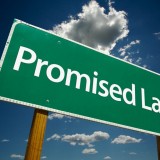Revelation: starting with a lesson in how to worship
As we journey through the book of Revelation, we’re enlisting the help of Michael Wilcock and his book ‘The Message of Revelation’ as our guide. Wilcock presents the book of Revelation in a series of scenes. The journey through these scenes starts rooted in the reality of our everyday world and moves towards a vision of the world to come. Yesterday, we looked at the seven churches in Scene 1; today, Scene 2 is all about the seven seals.
So let’s have a read of Revelation 4:1-8:1. Read it aloud if you can. It gives you that sense of rhythm and repetition. It was meant to be read aloud. It is dramatic and visual.
The first thing that stands out to me is the worship. We would do well to learn from this lesson in how to worship the one true God. Here are the worship songs they used:
Holy, holy, holy
is the Lord God Almighty,
who was, and is, and is to come. Revelation 4:8
You are worthy, our Lord and God,
to receive glory and honour and power,
for you created all things,
and by your will they were created
and have their being. Revelation 4:11You are worthy to take the scroll
and to open its seals,
because you were slain,
and with your blood you purchased for God
persons from every tribe and language and people and nation.
You have made them to be a kingdom and priests to serve our God,
and they will reign on the earth. Revelation 5:9-10Worthy is the Lamb, who was slain,
to receive power and wealth and wisdom and strength
and honour and glory and praise! Revelation 5:12To him who sits on the throne and to the Lamb
be praise and honour and glory and power,
for ever and ever! Revelation 5:13Salvation belongs to our God,
who sits on the throne,
and to the Lamb. Revelation 7:10Amen!
Praise and glory
and wisdom and thanks and honour
and power and strength
be to our God for ever and ever.
Amen! Revelation 7:12
I wonder what you notice as you read through these. It jumps out to me that these words are all about the nature of God and what Jesus has done, and not about our feelings and individual responses. These words of worship focus our eyes firmly on just how incredible God is. And on his worthiness, his worthship (which is where the word worship comes from).
The second thing that stands out from this passage is the numbers and the specificity of them. And yet it’s clear these number patterns are not simply accurate numbers, they are symbolic in some way, repeated often. They have a more figurative meaning than literal. We can strive to work out what the meaning behind each of these numbers, but at the end of the day, this vision was never meant to be seen as a mathematical puzzle.
So who are the 24 elders seated by the throne of God? We can’t know for sure, but they seem to represent the church of God here on earth.
And why is the number 7 important? We don’t know why, but we know it is. At the beginning, we have the seven days of creation and into all eternity, here in Revelation, we have the number 7 repeated time and time again in this vision – ‘the music of eternity is reverberating with the same seven-beat rhythm’ (page 62).
And how about the number 4? Do the four corners refer to the four compass points, encompassing the whole world?
And so we come to the sealed scroll. There is only one who is worthy to break the seals and open the scroll: Jesus Christ. Only Jesus can make sense of these things and shed light on them and ultimately redeem them.
Wilcock’s suggestions of what the seven seals represent seemed helpful to me so I share them here. The first four are what have come to be known today as the four horsemen of the Apocalypse.
‘As the Lamb unseals the book of history the immediate impression we get is of a suffering world.’ (page 76) And the church is not exempt.
Seal 1>Conquest
Seal 2>Strife
Seal 3>Scarcity
Seal 4>Death
Seal 5> The suffering of God’s witnesses
Seal 6>The final cataclysm: the end of the entire universe as we know it
When each of the first four seals is released, one of the four living creatures shouts ‘Come!’ Isn’t this an invocation to Jesus – ‘Come, Lord Jesus, come!’? Because as we look around us and see conquest and strife and scarcity and death, isn’t that our cry too – ‘Come, Lord Jesus, come!’?
But then we remember the worship that surrounds this vision of the scroll and the seals. We remember just who the God we serve actually is. He is in control. He will have the final victory. The sixth seal reveals those who have been ‘sealed’. If we are God’s servants, we have been sealed. And don’t get caught up with the number 144,000. It’s symbolic. It’s ‘suspiciously tidy’.
Seal 7>The rest is silence: Just as the creation of the world took place in six ‘days’ followed by a day of rest, these six seals are opened, followed by a period of rest and silence. It is done. It is finished. It is complete. The seventh seal is the start of something new. There is more to come. But for now, there is silence.
It’s a moment in time to take in everything that has happened in Scene 2 before moving on to Scene 3.












